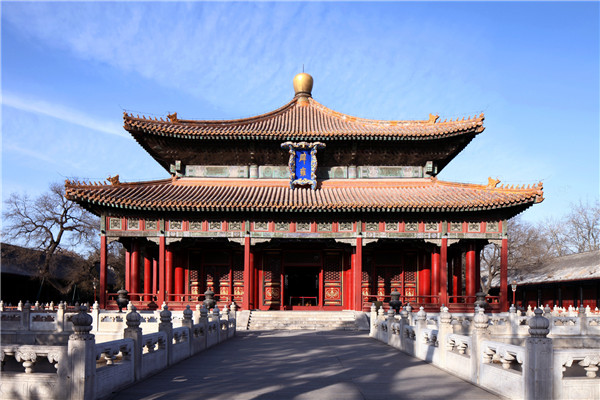
来源@视觉中国
Also translated as Imperial College, it was first established in 1306. It served as the supreme administrative headquarters for the organization of education and the highest seat of learning during the Yuan (1271-1368), Ming(1368-1644) and Qing (1644-1911) dynasties.

来源@视觉中国

来源@视觉中国
Flanked by the Temple of Confucius and Yonghe Lamasery, it is located at 15 Guozijian Street (originally named Chengxian Street). Being the imperial college, it attracted much attention from the state, and was rebuilt many times. After two large-scale repairs in the Ming Dynasty, and the construction of Biyong Hall in the Qing Dynasty, it became what we see today, covering an area of 37,000 sq meters (44,250 sq yard). It is the last imperial ccademy in China and has been listed as an important cultural relic site under state-level protection.

来源@视觉中国

来源@视觉中国
Facing south, it is the only imperial college from ancient times preserved up to now. It is a remarkable architectural complex, with over one hundred buildings. Jixian Gate (the front gate), Taixue Gate (the second gate), the glazed archway, Biyong Hall, Yilun Hall and Jingyi Pavilion are located along the central axis. On the east and west sides of the main building, four halls and six palaces were laid out to achieve the symmetrical effect of perfect unity.
Source: travelchinaguide.com




